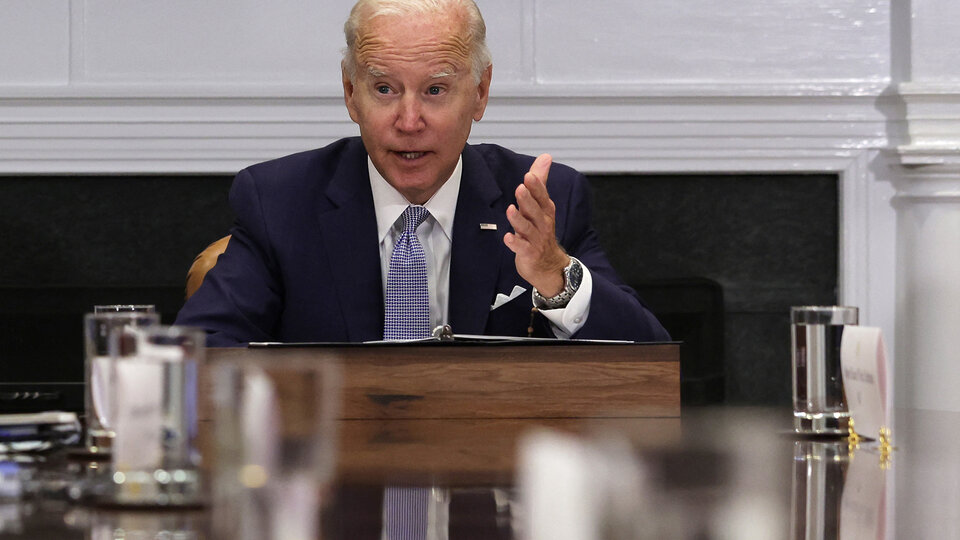The United States appoints an ambassador to the Arctic | NATO treats Russia’s presence in the Arctic as a strategic challenge

On Friday, the United States announced the creation of an ambassadorial position to the Arctica region where Russia and China are increasing their presence in open water due to climate change.
According to State Department spokesperson Vidant Patel, Secretary of State Anthony Blinken will soon appoint an Ambassador-at-Large dealing with other Arctic countries, Indigenous groups and other stakeholders.. “The peaceful, stable, prosperous, and cooperative Arctic region is of critical strategic importance to the United States and a priority for Secretary Blinken,” the US spokesperson said.
With the aim of strengthening its presence in the Arctic Circle, the United States decided to raise the position of Arctic Coordinator to Ambassador of the Arctic Region. “The United States has long been committed to protecting our national security and economic interests in the region, combating climate change, promoting sustainable development and investment, and enhancing cooperation with nations, allies, partners, and Arctic partners.”Highlights of the statement posted on the State Department page.
The new ambassador will replace career diplomat Jim Dyhart, who has been the US Arctic Coordinator since July 2020. The diplomat has experience, primarily, in matters of regional security, civil-military cooperation and international negotiations.
The announcement of the new US ambassador-general position comes as days of talks on Arctic issues begin in Greenland. The meeting is being held on the sidelines of the Arctic Circle Greenland Forum in Nuuk, the capital of Greenland. According to the official website, the event will take place in Japan and Abu Dhabi next year.
At a meeting of the Arctic Council last year in Iceland, Blinken said countries in the region had a responsibility to ensure peaceful cooperation. however, Seven of the eight Arctic Council nations suspended their participation earlier this year because the rotating presidency is in the hands of Russia, alienated by the West after the invasion of Ukraine.
Arctic in conflict
The United States is intensifying its movements in the Arctic against Russia, which is increasing its presence near the North Pole, both by submarines and by combat aircraft. In addition, China is building research stations in the Arctic, widely seen as a precursor to a greater existence.
Putin’s government intends to strengthen its positions in the Arctic economically and militarily and regards the United States’ desire for ocean dominance and NATO expansion as major threats. According to the Russian government, the Arctic has become an international competition area, not only from an economic point of view, but also from a military point of view, according to a doctrine published at the end of July.
for this part, NATO Secretary General Jens Stoltenberg on Friday warned of the strategic challenge posed by the Atlantic alliance due to Russia’s growing presence in the Arctic. Stoltenberg concluded a three-day visit to Canada at Cold Lake Air Force Base in the northwest, where North American Air Defense Command (NORAD) combat aircraft tasked with patrolling the Arctic are based.
“Russia has established a new leadership in the Arctic. It has opened hundreds of new bases in the Arctic, as well as old military facilities from the Soviet era, including deep-sea air bases and ports,” Stoltenberg said at a press conference at the end of his visit. .
Stoltenberg also emphasized the growing importance of the North of the planet for NATO, recalling that once Sweden and Finland join the organization, seven of the eight Arctic nations will be integrated into the military alliance. The only Arctic country that will be excluded is Russia specifically.
Salvation melts
The Arctic is one of the few regions where natural resources remain virtually untouched and where an estimated 25 percent of unknown oil and gas reserves lie beneath its waters and ice.
Temperatures in the Arctic have risen in recent years to much higher levels than the rest of the planet, raising the possibility that once impenetrable waterways will open to merchant and military ships. There are two lanes, one in the northeast, which is non-navigable, and the other in the northwest, which first opened for a few months in 2007. Researchers estimate that ships will be able to use this latter lane year-round from 2050. Due to climate change .

“Coffee fanatic. Gamer. Award-winning zombie lover. Student. Hardcore internet advocate. Twitter guru. Subtly charming bacon nerd. Thinker.”











